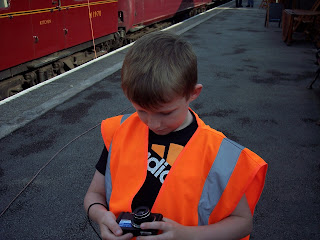Just a short blog to update information on what I'm using to produce the videos.
In the latest series of videos on the channel I have been using multiple videos of the real world and merging them with the videos made on the model.
I have had many requests to make a video on how this is achieved and I will do this in the near future.
(First video released 2nd August 2020).
In the meanwhile, some notes on what I am using.
I'm sure you will be familiar with the many packages you can get for very little money which removes backgrounds and unwanted items from photographs and allows you to replace these items with virtually anything, well that's the same as what I am doing, but, I am using videos instead of still photographs.
You can do this sort of photograph editing on virtually any domestic computer without any specialist hardware.
The videos I produce are all made in 4k. This produces very high quality video which can be viewed on the latest widely available high definition televisions. (8k is on its way but is a while before its widely available).
When you see one of the latest videos of mine, post June 2020, chances are it will be a combination of at least 4 x 4k videos running all at the same time, one or two for the sky and background, one for the model, one for foreground plus the soundtrack.
In order to edit multiple 4k videos you will need a high spec machine and this what I use, there will be better spec'd machines and later video cards, but this combination suits me and allows me to produce my videos in a reasonable amount of time.
Computer
Dell Dual Xeon 3.5GHz 8 Core Processors (16 cores total)
64 GB RAM
Nvidia M4000 Video Card 8Gb VRAM
Nvidia K20 Video Tesla Accelerator 5Gb VRAM
1Tb SSD
Elgato Stream Deck
Software
Magix Vegas Pro Suite Version 18
Update 04/05/21
Camera:- Gopro 9 Black




